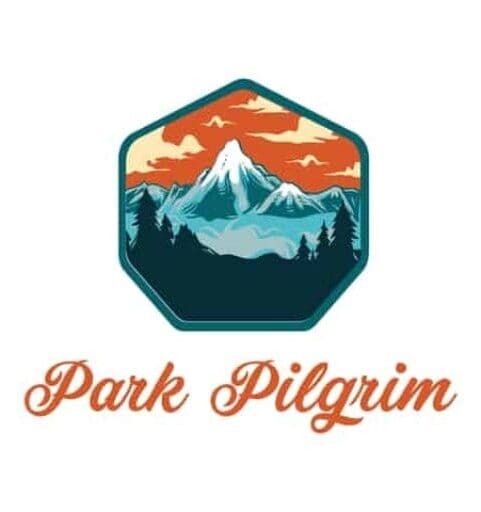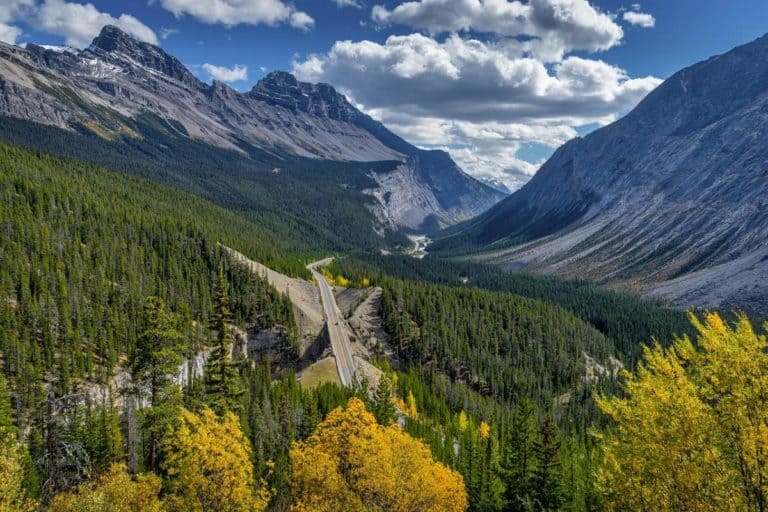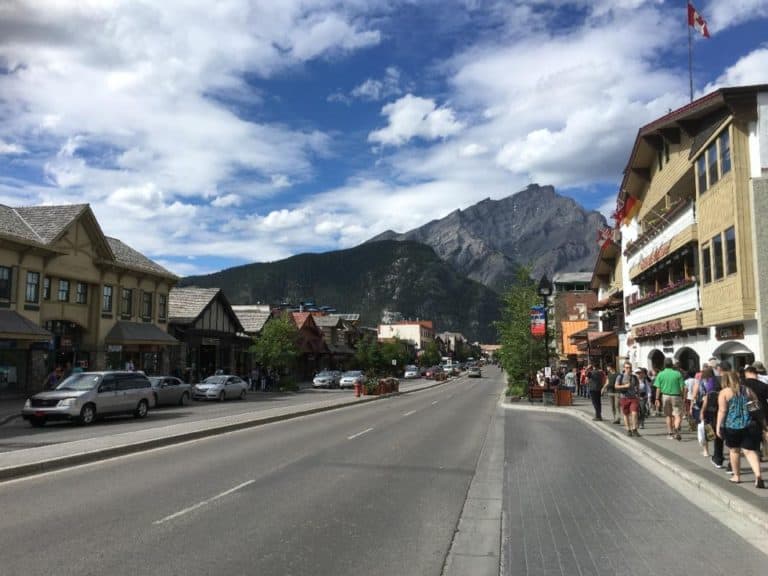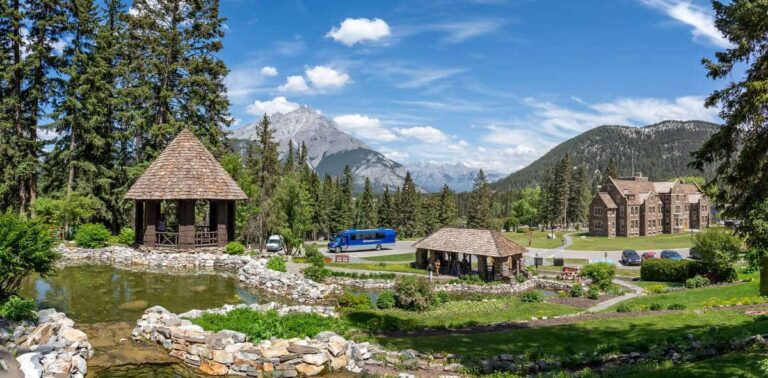Explore the Rockies in Banff on Horseback (Also for Beginners!)
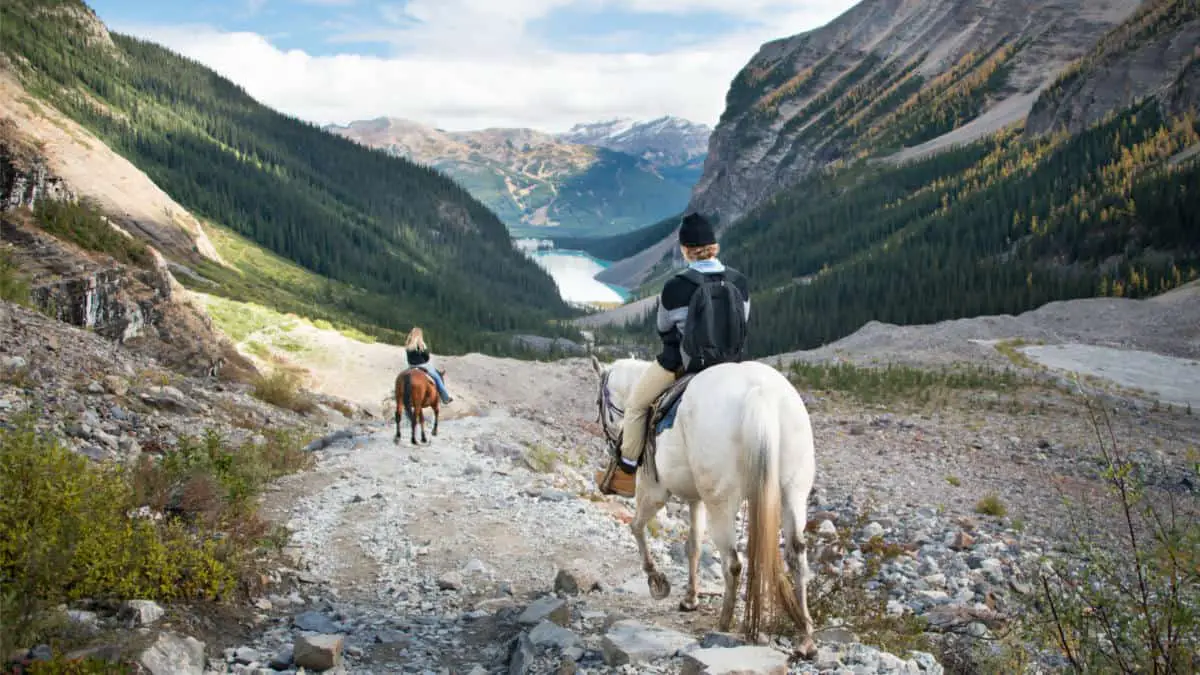
If you come to Banff for nature, why not experience it in a special way? In other words: discover the Rockies from the back of a horse, just like the pioneers did in the Wild West of the nineteenth century. You won’t regret it.
Of course, Banff National Park is eminently suitable for exploring by car. But that convenience cannot compete with the adventure of a ride on horseback. Imagine: While the wind blows through your hair, the sun reflects on your sunglasses, and your horse’s hooves beat rhythmically on the forest floor, you might just feel like a cowboy for a moment. What’s involved in that? Read below to find out.
Is it Essential to Have Experience Riding a Horse?
Yes and no. As with anything, it helps if you have experience, but even as a beginner, you can get on a horse just fine. The horseback riding tours in Banff are always guided. Before you get on, you will receive extensive instruction to make the tour as good and as easy as possible. The basics are simple, so you’ll master them in no time.
Why Exploring on Horseback Is a Good Idea
Horseback riding gets you outdoors and makes you use your muscles in a completely different way. Being one with nature takes on a whole new meaning this way: You’re restraining a large animal as you move through the breathtaking landscapes of the Rockies.
For those who have never ridden a horse before, this is a memorable experience. Moreover, you especially challenge yourself. Horseback riding is also wonderfully relaxing. It’s adventurous and gives a unique feeling of freedom. The most important reason: Horseback riding is just fun to do!
How Strenuous Is Horseback Riding?
Horseback riding can be a strenuous activity, depending on how you ride the animal. At a normal gait, riding is relaxing and restful. You don’t have to be afraid of a significant effort to control your horse and stay in the saddle.
It’s different when the horse transitions into a trot or (especially) a canter. Count on burning calories and building muscle because you need strength for that. For a good reason, horseback riding is in 54th place of the most demanding sports on the website Topendsports. This site based its ranking on ten athletic components on which sports were assessed.
Where Can I Go in Banff?
To explore the Rockies on horseback, you have quite a few options in Banff. Tours are popular, but the range is so broad that booking a suitable tour is almost always possible. There are several providers:
What Does a Trip on a Horse Cost?
Horseback riding in the Banff area doesn’t have to be expensive at all. For example, you can book a one-hour tour for as little as CAD 82 per person. In addition, there are many variants, from one-day rides to rides several days long. Below you’ll find some possibilities. There are even full packages of a week. I have not included them here because they are usually booked by experienced riders.
Overview of the Possibilities
- Bow River Ride, 1 hour CAD 92
- Spray River Ride, 1 hour CAD 99
- Sundance Loop Ride, 2 hours CAD 180
- Bow Valley Loop Horseback Ride, 3 hours CAD 239
- Sulphur Mountain Horseback Ride, 4 hours CAD 279
- Sundance Overnight Backcountry Lodge Trip by Horseback, 2 days CAD 725.54
- Erling Strom Trail Backcountry Lodge Trip by Horseback, 4 days CAD 1839.70
Can You also Go Horseback Riding with Children?
Yep, your child(ren) can also join you on a horseback riding trip through the Rockies. From 8 years old (depending on the organizer, this can also be 9 years), they can participate in the regular tours, but only when accompanied by an adult. The adult must give written permission.
Children from 3 to 7 years old can ride a pony for fifteen minutes when wearing a helmet and when they’re accompanied by an adult. You can do this at the Warner Stables or the Banff Springs Corrals for CAD 20.
WARNER STABLES
Address: 100 Sundance Road, Banff
Banff Springs Corrals
Address: Spray Avenue, Banff (at the parking lot just before the Banff Springs Hotel on the left)
What if You Have Never Ridden Before?
Of course, before the tour begins, you will receive instruction on how to handle a horse and how to ride the animal. That instruction will be similar to the tips below.
1. Wear the right clothes
Long pants and proper footwear are essential for horseback riding. Boots with low heels are ideal but riding with regular, closed shoes is also possible. Do not wear things that can get tangled in the reins and saddle such as scarves and handbags. It is also advisable to wear a helmet. Especially concerning your insurance, should you have one.
2. Greet your horse
It is good to ‘greet’ the animal to ensure your horse does not startle when you approach him. You do this by extending your arm and offering him the back of your hand to smell it. Wait until he touches your hand with his nose. This is called the ‘rider handshake’. Think of it as a way of asking the horse for permission to mount him.
3. Get on with confidence
Getting on your horse with confidence is crucial because it can sense when its rider is nervous. The animal may also start to feel uncomfortable and therefore exhibit undesirable behavior.
Of course this is easier said than done if you have no riding experience, but show the animal your inexperience as little as possible. Your handler will probably hold your horse’s head while you mount him. If not, ask someone to do it, so the horse doesn’t move.
Lift your left foot into the stirrup, hold both reins with your left hand, and push yourself up with your right leg. Do not pull the horse down with your arms. This can be painful for the animal. You can, however, put your hands on the horse’s back for balance.
4. Do not lean back
Once you are in the saddle, sitting up straight and relaxing your back is the best way to control your horse. You gently hold the reins with one foot in each stirrup. This makes it easy to keep your balance.
5. Be careful with the reins
Relax your arms and never pull too hard on the reins, or you may hurt your horse. Make sure your arms form a right angle at the elbow and not lift the reins above shoulder height.
6. Don’t hold the horn of the saddle for balance
You most likely have a saddle with a horn. While it’s tempting to grab it, it’s not meant to be. Try adjusting your posture and stretching your legs if you feel you are losing balance and want to frenetically hold on to this part of the saddle.
In an unexpected situation, holding on to the horn is not good to keep your balance anyway. It makes it more likely that you will fall.
7. Focus your eyes on the point you are going to
When riding, don’t focus your gaze on your horse, but keep your eyes on the trail and sit up straight. This should be enough for a safe ride.
8. Responsible dismounting
If you stop halfway, or the ride is over and want to dismount, make sure your horse is standing still. It is better to hold the horse, especially as a beginner. Take both feet out of the stirrups, lean forward, swing your right leg over the horse, and jump off. Try to do it as smoothly as possible.
What Are the Dangers?
Horseback riding is not entirely without risk. The challenge is mainly keeping a relatively large animal under control as horses can startle and make unexpected movements. Falling off a horse is obviously something you want to avoid at all costs. In the end, it’s all about minimizing the chances of danger while riding. When pregnant, you’ll need a doctor’s note to ride.
Decrease the Risk with Ease
Wear a helmet or cap. Make sure it’s the right size because a helmet or cap that is too big or too small can actually cause more damage. Usually, the tour organizer has a suitable helmet or cap for you.
To check that your helmet or cap fits you properly, the edge of the cap or helmet should be about two finger-widths above your eyebrows. Also, it should be straight on your head. If the cap or helmet is too far back, you run the risk of neck injury in the event of a fall.
Use safety stirrups. These stirrups prevent you from getting your foot caught in them. Safety stirrups are not always a matter of course with tour organizers. Ask about them before you start the tour.
Injuries and Other Physical Discomforts
If you suffer from knee, hip, or back problems, it is advisable to consult a doctor or physiotherapist beforehand.
How Do I Recognize a Safe Helmet?
A safe helmet has a label on the inside that says “ASTM/SEI certified”. ASTM stands for American Section of the International Association for Testing Materials. This institution establishes safety standards for all kinds of locations and materials to which safety requirements apply. These test procedures and safety requirements can then be adopted by individual organizations.
SEI stands for Safety Equipment Institute Inc. When you see this label you know that the required quality of the helmet has been verified.
Am I Insured in Case of an Accident while Riding?
When you travel, it is, of course, wise to have travel insurance. Mainly to cover any medical expenses. Travel insurance provides for this.
However, it is good to make sure in advance that your travel insurance covers any expenses in case of a horseback riding accident. Check whether horseback riding is covered and the conditions with your insurance company.
It is also essential to check that your insurance policy also covers – in this case – Canada. Many insurers distinguish between, for example, European countries and countries outside Europe.
It is essential to know that many insurers will not reimburse you if you do not wear a helmet when riding. In addition, check whether the helmet meets the safety requirements (see above).
In for more thrilling adventures? In that case I highly recommend reading the article about booking a helicopter tour in Banff National Park.
